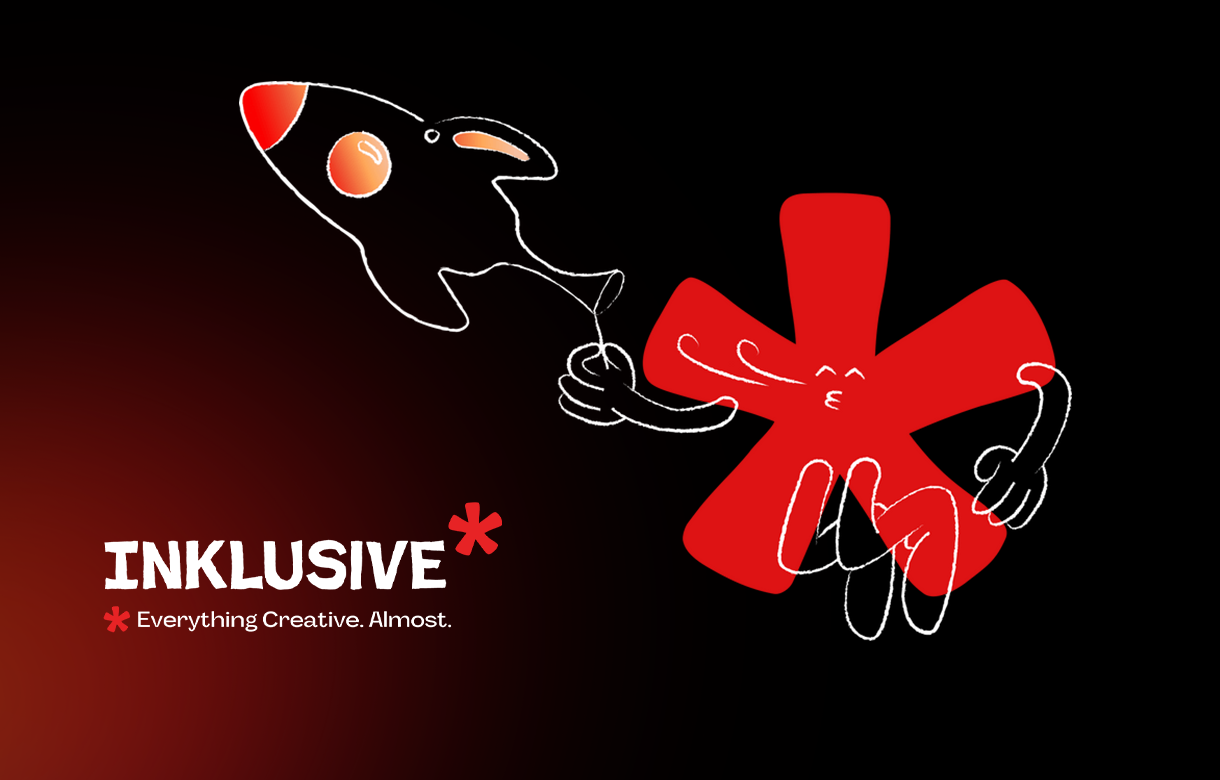Imagine walking into a room, ready to impress an audience with your ideas. That’s where a Presentation Deck comes in – it’s your secret weapon for storytelling and persuasion. Whether you’re pitching an idea, sharing insights, or educating a crowd, think of it as a collection of slides. There are a variety of presentation decks that cater to every scenario, from corporate pitches to educational lectures to creative showcases, all designed to engage, inform, and inspire. This is the world of presentation decks, where every slide has the potential to make a lasting impression!
What is a Presentation Deck?
You use a Presentation Deck to share information, ideas, or data visually. It’s a digital storytelling tool you use in the workplace and in school. Using this deck, complex information becomes easier to understand because every slide works together to form a cohesive narrative.
Significance of a Presentation Deck
An effective presentation deck transforms concepts into visuals. It’s not just about displaying data, it’s about telling a story that connects with people. A well-crafted deck can make presentations more effective by highlighting key points, supporting spoken words with visual aids, and keeping the audience engaged.
The Role of a Presentation Deck in Business Communication
You can use a presentation deck to pitch ideas to investors, share annual reports with stakeholders, train employees, or share strategies with your team. The deck is crucial for communicating business goals and strategies clearly and persuasively, so it’s an important tool for making decisions, sharing info, and influencing people.
Difference Between a Pitch Deck and an Investor Deck
- Pitch Deck: This is your business’s first impression. It’s a concise, engaging presentation used primarily for initial meetings. Rather than focusing on the nitty-gritty details of your business model or product, you should focus on capturing attention and creating excitement.
- Investor Deck: The investor deck comes after you’ve captured investors’ interest. It’s a detailed presentation that goes over the details of your business plan. It’s got financials, market analysis, growth strategy, and a long-term vision for your company. Using it, you’ll give potential investors a complete picture of your business, so they’ll be able to make informed decisions.
Features of a Pitch Deck
A pitch deck is a concise presentation used by entrepreneurs to provide their audience, typically potential investors, with a quick overview of their business plan. Here are the key features that should be included in a pitch deck:
Engaging and Story-driven
Your pitch deck should not just present facts but tell a compelling story about your business. This involves weaving a narrative that covers where your business started, where it is now, and where you see it going.The story should be relatable, capturing the struggles, successes, and aspirations of your business. This approach helps create an emotional connection with your audience, making them more invested in your idea.
Simple and Clear
Clarity is crucial in a pitch deck. The information should be presented in a straightforward and easily digestible manner. Avoid industry jargon or overly technical language unless necessary. Each slide should focus on one main idea, ensuring that your audience can quickly grasp your points without feeling overwhelmed.
Attractive Visuals
The design of your pitch deck plays a significant role in maintaining the audience’s attention. Use high-quality visuals and ensure that the design is consistent throughout the deck. This includes using a harmonious color scheme, readable fonts, and clear, impactful images or graphics. The visual elements should complement and reinforce the narrative, not distract from it.
Solution-Focused
Clearly articulate the problem your business aims to solve and why this problem is significant. Then, demonstrate how your product or service provides a unique and effective solution. This section should highlight the benefits and value your business brings, making it clear why your solution stands out in the market.
Highlighting Key Business Aspects
Your pitch deck should succinctly cover critical aspects of your business. This includes:
- Business Model: Explain how your business makes money. Include your pricing strategy, revenue streams, and any unique aspects of your business operations.
- Target Market: Define your target audience. Include demographics, psychographics, and any relevant behaviors or trends that make them an ideal customer for your product or service.
- Competitive Advantage: Discuss what sets your business apart from competitors. This could be your technology, team expertise, partnerships, proprietary data, or any other unique strengths.
Financial Projections
Present realistic financial projections that show potential growth and profitability. If you’re seeking funding, be clear about how much you need, what you will use it for, and what investors will get in return.
Call to Action
End with a clear call to action. Whether you’re seeking funding, partnerships, or just looking to build connections, be explicit about what you want from your audience following the presentation.
What Makes an Investor Deck Stand Out?
An outstanding Investor Deck not only informs but also impresses potential investors by demonstrating a deep understanding of your business and its place in the market. Here’s a look at the elements that make an Investor Deck stand out:
Detailed Financials
- Present comprehensive financial data, including historical revenues, profits, and cash flow if applicable.
- Include detailed projections for the next 3-5 years, showing expected growth and scalability.
- Break down your use of funds, specifying how you plan to allocate investment capital.
- Financial metrics should be realistic, well-researched, and based on sound assumptions.
Market Analysis:
- Conduct an in-depth analysis of your target market, including size, growth rate, demographics, and behavior patterns.
- Discuss market trends, and how your business is positioned to capitalize on these trends.
- Perform a thorough competitive analysis, showcasing your understanding of your competitors and your business’s unique positioning.
- Highlight any market research or validation that supports your business model.
Growth Strategy:
- Clearly articulate your strategy for growth, explaining how you plan to acquire and retain customers.
- Detail your roadmap for scaling operations, including any expansions into new markets or product lines.
- Discuss marketing strategies and sales channels you’ll use to drive growth.
- Show how your growth strategy aligns with industry trends and market demands.
Team Profiles:
- Introduce key team members, emphasizing their relevant experience, expertise, and accomplishments.
- Highlight how each team member’s skills contribute to the success of the business.
- If there are gaps in your team, acknowledge them and discuss plans for future hires or how you will fill these gaps.
- Include advisors or mentors who add value to your business through their experience and network.
Risk Assessment:
- Identify potential risks that could impact your business, including market risks, competitive risks, operational risks, and financial risks.
- Present strategies for mitigating each identified risk, showing that you are prepared for various scenarios.
- Discuss the regulatory landscape, if relevant, and how you plan to navigate it.
- Include contingency plans for unforeseen events or challenges
Different Types of Presentation Decks
Report Presentation Decks
Report Presentation Decks are integral in academic, corporate, or organizational environments, primarily used for conveying detailed results, findings, or updates. As a result of their structured, formal format, these decks can provide complex information in an easy-to-understand manner. Charts and graphs are included to visually represent data, along with clear headings and subheadings that organize the content. These decks often encompass a comprehensive approach, including methodologies used, results obtained, and conclusions drawn, making them ideal for detailed reporting on research findings, project status updates, annual reports, or performance evaluations. They are commonly utilized in academic conferences, corporate board meetings, or situations requiring a systematic presentation of data and conclusions.
Product Presentation Decks
Product Presentation Decks are designed to introduce and highlight a new product to clients, investors, or internal teams. The focus of these decks is to showcase the product vividly and persuasively. They typically feature high-quality images or renderings of the product, clearly outlined key features, and details on market positioning and the target audience. An emphasis is placed on the benefits the product offers to customers. To add credibility, customer testimonials or case studies can be included. These decks are particularly useful for product launches, sales meetings, and marketing campaigns, as they provide a comprehensive overview of the product’s capabilities and market potential, tailored to engage and convince the target audience.
Business Stats Presentation Decks
Business Stats Presentation Decks are essential in making complex business data and statistics accessible and understandable. These decks are heavily data-driven, incorporating various forms of data visualization such as infographics, charts, and graphs to present data clearly and engagingly. They focus on delivering key business insights through a concise and uncluttered presentation of data, often including comparative analyses to highlight trends and patterns. These decks are beneficial for business strategy meetings, financial reviews, and market analyses, where it’s crucial to communicate data effectively to inform decision-making processes. They help in breaking down complex data into manageable insights, facilitating a better understanding of business performance and market dynamics.
Sales Pitch Decks
Sales Pitch Decks are a vital tool for sales teams, used in presenting a product or service to potential clients. The core objective of these decks is to persuade the client by showcasing how the product or service effectively meets their specific needs or solves their problems. The content is tailored to be persuasive, focusing on the benefits of the product/service rather than just its features. These decks often include real-world examples, case studies, or success stories to demonstrate the effectiveness of the offering. A clear call-to-action is an essential component, guiding potential clients toward the next steps in the sales process. Sales Pitch Decks are adaptable and can be customized for different client profiles or industries, making them a versatile tool in various sales scenarios.
Investor Pitch Decks
Investor Pitch Decks are crucial for startups and businesses seeking investment. They are crafted to convince investors of the business idea’s viability and growth potential. These decks narrate a compelling story about the company, highlighting its mission, vision, and unique value proposition. They provide a thorough market analysis, showcasing the business’s understanding of the market trends, competition, and growth potential. Details of the business model, revenue streams, and financial projections are presented to give investors a clear picture of the business’s financial health and prospects.
Additionally, these decks include information about the management team, emphasizing their expertise and ability to drive the business forward. Investor Pitch Decks are indispensable in scenarios like startup pitch events, meetings with venture capitalists, and discussions with potential investors, where attracting investment is the primary goal.
What is the Difference Between a Slide Deck and a Slideshow?
- Slide Deck: It refers to the collection of slides themselves, like a stack of cards. Each slide contains text, images, charts, and other elements. “Deck” refers to a presentation’s material and content, rather than a stack of slides.
- Slideshow: This is more about the presentation of the slide deck. It’s the act of displaying the slide deck, usually in a sequence, often with transitions and animations. If you hear ‘slideshow’, think of it as a dynamic, interactive presentation, presented in person or online.
In summary, the slide deck is what you prepare (the slides themselves), and the slideshow is how you present it to others.
INKLUSIVE: Your Creative Companion for Design
In the world of presentations, where engaging your audience is imperative, INKLUSIVE emerges as a shining example of innovation and effectiveness. Our comprehensive design subscription service, thoughtfully designed to cater to diverse design needs, is your ultimate partner for creating memorable and impactful decks. We understand that a presentation deck is not just a collection of slides; it’s a storytelling tool, an opportunity to connect with your audience, and a reflection of your brand’s identity. Whether you’re in the corporate world, the educational sector, or any industry that requires compelling visuals, our designs are expertly crafted to captivate and resonate with your audience.
Choosing INKLUSIVE is a way to achieve cost-efficiency without compromising on creativity and quality. We alleviate the typical financial burdens associated with design work, resulting in up to a 50% reduction in annual costs for a standard team. Our streamlined process eliminates the need for hiring, training, and licensing, allowing you to focus on what truly matters—delivering outstanding products and services. Ready to take your designs to the next level? Subscribe to INKLUSIVE for creative, efficient, and impactful design solutions tailored specifically for you.
Frequently Asked Questions:
What is a deck presentation?
A deck presentation is a collection of slides used to visually communicate information, ideas, or data. Think of it as a digital flipbook, each slide being a page that helps tell a story or present an argument. It’s widely used in business, education, and various professional settings.
What is the difference between a PowerPoint presentation and a deck?
The term “deck” is a general term that refers to any slide presentation, regardless of the software used to create it. PowerPoint presentation, on the other hand, specifically refers to a deck created using Microsoft PowerPoint.
So, all PowerPoint presentations are decks, but not all decks are PowerPoint presentations (as they can be made with other software like Google Slides or Keynote).
How do you make a good presentation deck?
- Keep it concise: Stick to key points and avoid cluttering slides with too much text.
- Use visuals: Incorporate images, graphs, and charts to make your points clearer and more engaging.
- Maintain consistency: Use a consistent color scheme, font style, and layout throughout the deck.
- Start strong: Begin with an engaging introduction to hook your audience.
- Tell a story: Structure your presentation in a way that logically flows from one point to the next.
- Practice delivery: A good deck also depends on how well it’s presented.
How many slides are in a deck?
The number of slides in a deck varies depending on the content and purpose. Generally, a good rule is to keep it as short as possible while effectively conveying your message. For most presentations, 10 to 20 slides should be enough. Remember, it’s about quality, not quantity. Each slide should serve a purpose and add value to your presentation
A deck presentation is a collection of slides used to visually communicate information, ideas, or data. Think of it as a digital flipbook, each slide being a page that helps tell a story or present an argument. It’s widely used in business, education, and various professional settings.
The term “deck” is a general term that refers to any slide presentation, regardless of the software used to create it. PowerPoint presentation, on the other hand, specifically refers to a deck created using Microsoft PowerPoint.
So, all PowerPoint presentations are decks, but not all decks are PowerPoint presentations (as they can be made with other software like Google Slides or Keynote).
- Keep it concise: Stick to key points and avoid cluttering slides with too much text.
- Use visuals: Incorporate images, graphs, and charts to make your points clearer and more engaging.
- Maintain consistency: Use a consistent color scheme, font style, and layout throughout the deck.
- Start strong: Begin with an engaging introduction to hook your audience.
- Tell a story: Structure your presentation in a way that logically flows from one point to the next.
- Practice delivery: A good deck also depends on how well it’s presented.
The number of slides in a deck varies depending on the content and purpose. Generally, a good rule is to keep it as short as possible while effectively conveying your message. For most presentations, 10 to 20 slides should be enough. Remember, it’s about quality, not quantity. Each slide should serve a purpose and add value to your presentation











.jpg)
.jpg)


.jpg)



.jpg)






%20(1).jpg)







%20(1).png)